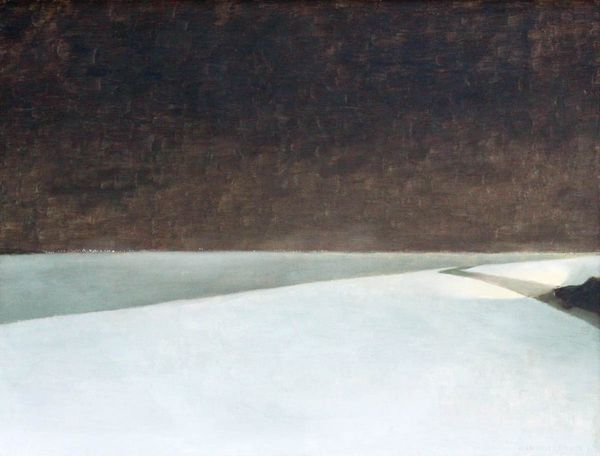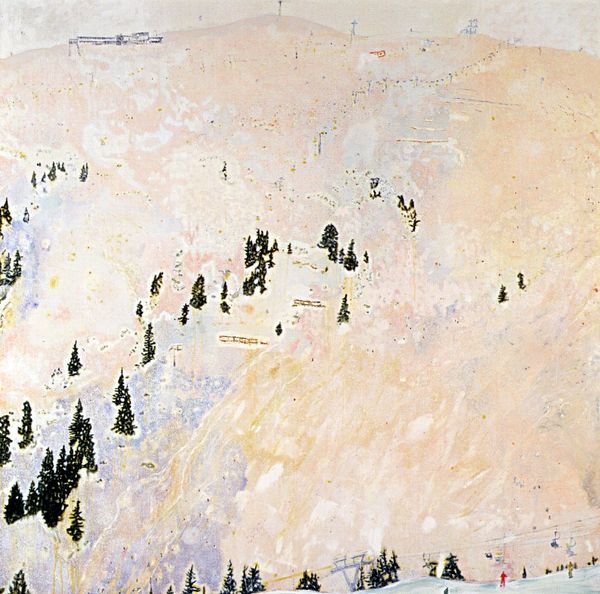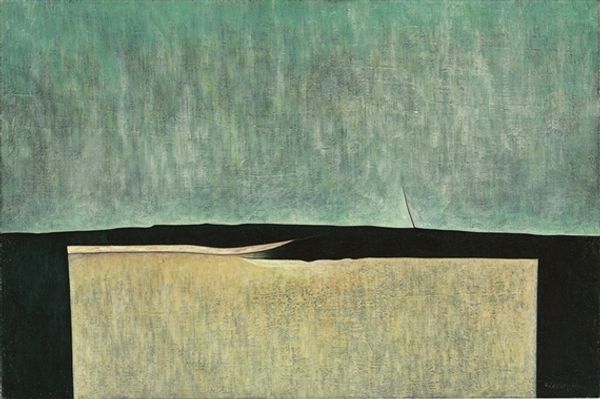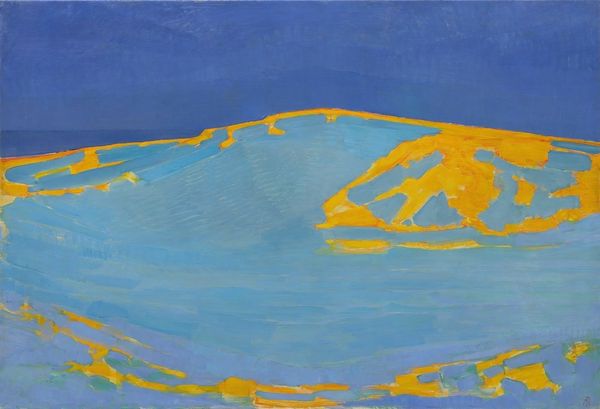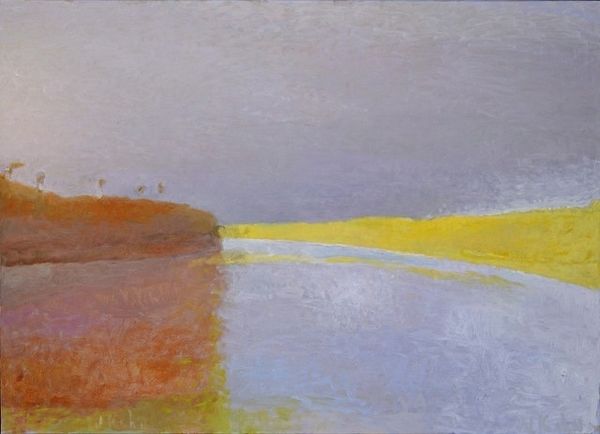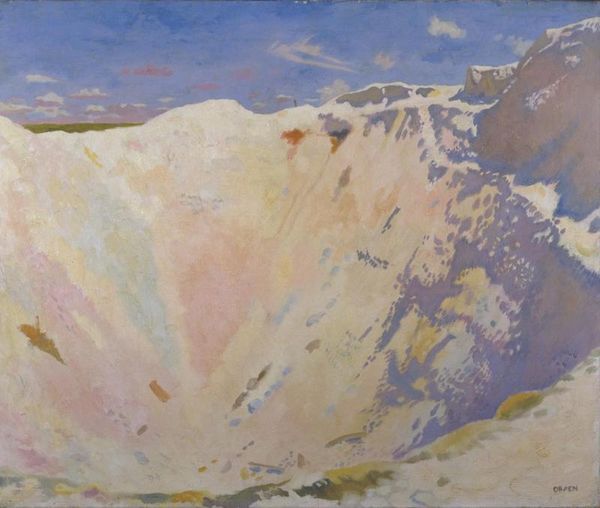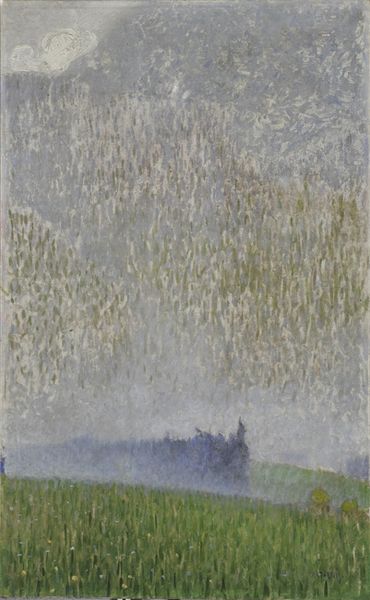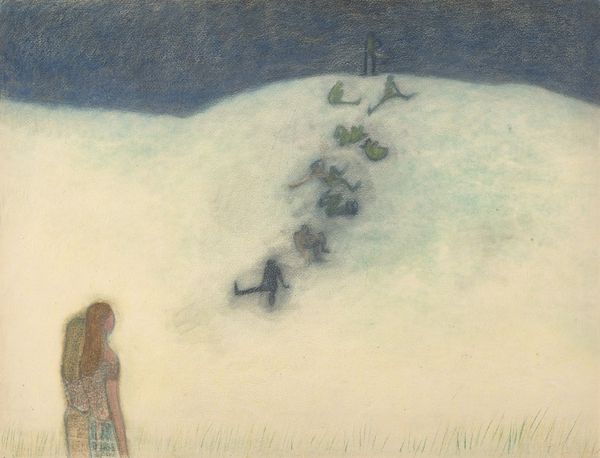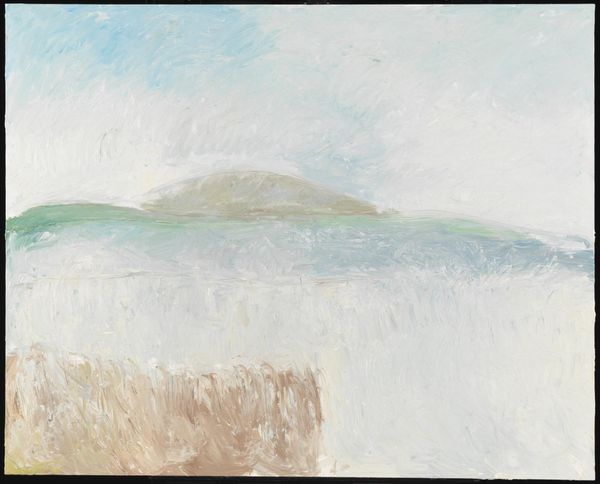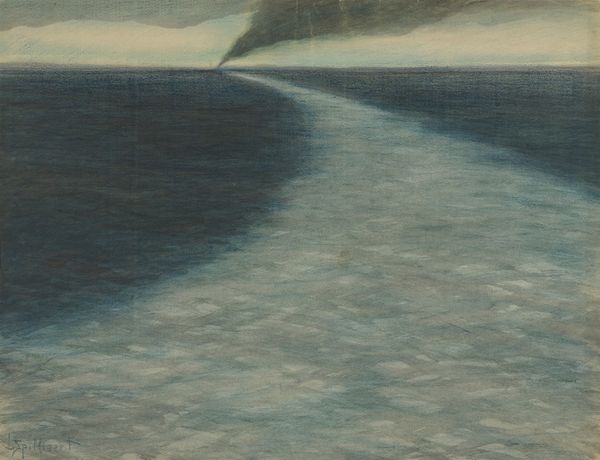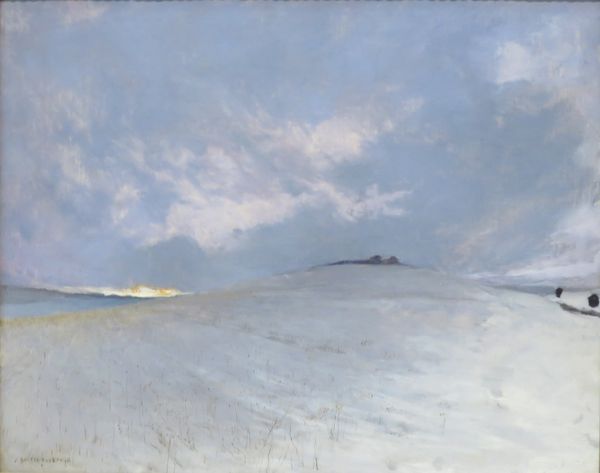
Copyright: Public domain US
Editor: Right in front of us, we have Cuno Amiet’s "Snowy Landscape (Deep Winter)," painted in 1904 with oil. It's overwhelmingly white; I’m immediately struck by the contrast between the vastness of the snow and the small, lonely figure on skis. What draws your eye as you look at this piece? Curator: Immediately, the overall texture seizes my attention. Amiet uses visible, directional brushstrokes to create a tangible surface. These marks coalesce to suggest movement, flow. Do you notice how the density of the strokes shifts the viewer’s gaze? Editor: You’re right, there is something to those strokes. It's almost like the snow isn't still – the direction changes the further down you look. I’d have thought an artist would focus more on making snow smooth. Curator: Indeed, he inverts expectations of faithful representation. Amiet isn't mimicking the visual appearance of snow, but conveying something deeper. Consider how the limited color palette—various shades of white and a small accent of green/brown at the top—works in conjunction with these textures to invoke the desolation of a “deep winter”. Does that suggest any themes to you? Editor: I suppose the formal elements underscore a feeling of isolation – that the stark palette and the texture work together to create that mood rather than relying on some narrative story about the skier. Curator: Precisely. Amiet, by foregoing strict representational accuracy in favor of emphasizing material presence through his unique textural application, manages to achieve that feeling of a lonely isolation you immediately noticed. He seems to deconstruct traditional landscape painting through formal means. Editor: So by drawing our attention to the texture and the form of the painting itself, he moves beyond a literal depiction of winter? That’s fascinating. Curator: It truly is! Amiet successfully directs the focus from a simple representation of nature towards something that can be defined as sensory response triggered by the way the materials are rendered and layered. Hopefully, more art enthusiasts will observe the materials first.
Comments
No comments
Be the first to comment and join the conversation on the ultimate creative platform.
